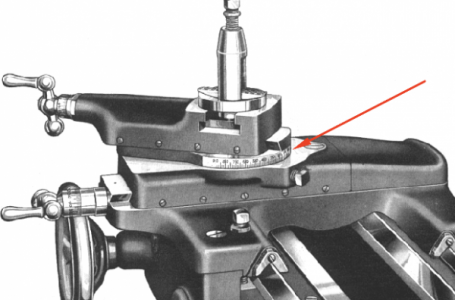- Joined
- May 14, 2013
- Messages
- 104
I don't even know what the term is to search for, so all I need here is a little "point me in the right direction". 
On my old lathe (South Bend 22Y...it's super old) the compound feed's dial/angle markings have completely worn out, making tapers complete guesswork. In the event that nobody is interested in buying it (posted it for sale locally), I'm going to try repairing it. Could someone kindly point me in the direction of "making a new one"? I am guessing it's going to involve a rotary table/dividing head (which is ok, planned on getting one anyways - have some gears to cut, too).
To be clear, maybe what I'm actually asking is "how does one make a circular piece with accurate angle divisions"...?
Here's the piece I need to re-make. Or refresh. Probably cut down that round face to clear the markings, then re-cut them...? Is this going to be a disaster? Do I have alternatives if those numbers are illegible?

On my old lathe (South Bend 22Y...it's super old) the compound feed's dial/angle markings have completely worn out, making tapers complete guesswork. In the event that nobody is interested in buying it (posted it for sale locally), I'm going to try repairing it. Could someone kindly point me in the direction of "making a new one"? I am guessing it's going to involve a rotary table/dividing head (which is ok, planned on getting one anyways - have some gears to cut, too).
To be clear, maybe what I'm actually asking is "how does one make a circular piece with accurate angle divisions"...?
Here's the piece I need to re-make. Or refresh. Probably cut down that round face to clear the markings, then re-cut them...? Is this going to be a disaster? Do I have alternatives if those numbers are illegible?

